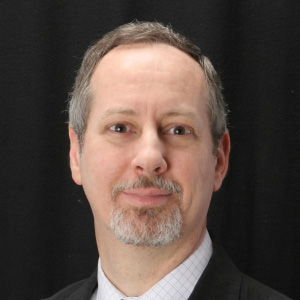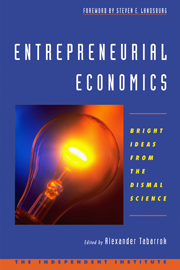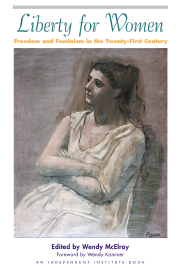In what has become a biannual ritual, the Senate last week voted down medical malpractice reform. Reasonable minds might differ on the merits of federal legislation, but one thing’s for certain: Medical malpractice insurance premiums are at an all-time high, and physicians are responding by retiring early, practicing more defensive medicine, and switching into less litigious specialties.
What’s less certain, at least in the public debate, has been the cause of high insurance premiums. Doctors, led by the American Medical Association, attribute “rapidly increasing medical liability insurance premiums” to “escalating jury awards.” Sen. Ted Kennedy, however, opposes federal reform because, as he told the New York Times, “the explanation for these premium spikes can be found not in legislative halls or courtrooms, but in boardrooms.” His complaint echoes assertions by trial lawyers and their allied consumer groups like Americans for Insurance Reform that “price gouging” by wicked insurance companies is to blame for premium increases.
On its face, price gouging is a peculiar explanation for recent increases in insurance premiums. Is greed new to the world? Were insurance companies followers of Mother Teresa just a few years ago? If greed and gouging are the explanations for rising premiums, why did the St. Paul group—one of the nation’s largest suppliers of medical malpractice insurance—pull out of the market in 2001? Were the profits from all that gouging just too much for St. Paul’s guilty conscience? And consider that almost half of doctors are insured through mutual, i.e., doctor-owned, insurance companies. Are the doctors gouging themselves?
The gouging explanation fails more than the credulity test. Price gouging can work only if firms have monopoly power—so if gouging is the explanation for higher premiums, we would expect to see higher premiums in states with less competition. My student, Amanda Agan, and I tested this hypothesis in a study released two days ago by the Manhattan Institute. Contrary to the gouging hypothesis, we found that a 10% increase in industry concentration reduces premiums by $2,200. The result makes sense if we remember that, to increase market share, firms don’t raise prices but rather lower them. Wal-Mart has grown into the nation’s dominant retailer by lowering prices, not raising them.
If greedy insurance companies are not to blame for medical malpractice premium increases, perhaps it’s foolish insurance companies. When it’s not blaming price gouging, Americans for Insurance Reform says that mismanaged investments and not the legal system are responsible for the most recent uptick in the “insurance cycle.” It is true that the insurance market periodically enters into times of crisis followed by times of relative quiet. The insurance cycle, however, is not an independent cause of higher premiums; it’s a natural consequence of the uncertainty of the liability system.
Over the long run, insurance companies must cover their costs, so increases in premiums track increases in tort awards. As we show in our study, during the last 30 years every dollar increase in awards has led to a dollar increase in premiums. But tort awards are very difficult to predict because past awards tell us very little about future awards. Insurance companies, therefore, have a difficult job: They must predict future awards based on just a handful of the most recent awards. Was the latest multimillion dollar award a signal of permanently higher costs, or was it just a blip? Is tort reform working or were the more reasonable awards of the last year just a pause in the long upward trend?
Given the difficulty of forecasting awards, it’s no surprise that insurance companies sometimes make mistakes. As a result, insurance companies can price premiums based upon a projection of future awards that are too low.
You never hear critics of the industry complaining of low prices, but we now know that prices in the 1990s were not high enough to cover the increase in tort awards. Recent increases in premiums are simply a belated recognition of the reality of what appears to be permanently higher medical malpractice awards. Since the insurance cycle is a function of the uncertainty of tort awards, not an independent cause of higher prices, the best way to dampen premium variation is to make tort awards more predictable.
In addition to being highly variable, medical malpractice insurance premiums are creating problems because they are simply too high, at least in some parts of the country. Our study examines how tort awards, like malpractice premiums, are much higher in some states than in others—for reasons having little to do with medical malpractice. For example, awards per doctor are approximately $10,000 in Pennsylvania but just $1,668 in Wisconsin. Is medical malpractice really six times worse in Pennsylvania than in Wisconsin? More plausibly, the reasons for Pennsylvania’s higher awards are found in legal and cultural differences, including the Keystone state’s elected judges and the redistributive fervor of the Philadelphia jury.
States with partisan elected judges, for example, have medical malpractice awards per claim that are $36,000 higher than in other states. It’s also well-known that the Philadelphia jury, like its cousin the Bronx jury, likes to redistribute the wealth. Between 1999 and 2001 there were 87 verdicts over $1 million in Philadelphia, almost as many as in all of California (101).
The way to fix broken medical malpractice systems, like Pennsylvania’s, is to address the underlying problems of the tort system—whether through federal statute, state legislation or judicial oversight. Pointing fingers at the insurance industry for price gouging or mismanagement may help trial lawyers block reform, but these accusations make little sense and are not supported by the data. As Daniel Patrick Moynihan famously said, “While all men are entitled to their own opinions, they are not entitled to their own facts.”












